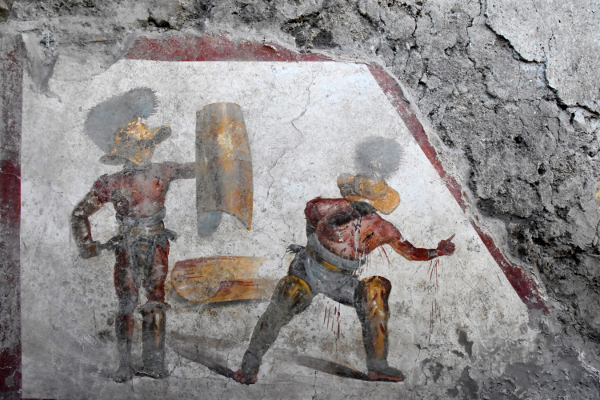
The ancient city of Pompeii, which was buried under four to six meters of volcanic ash and pumice after the eruption of Mount Vesuvius, has been archaeologists over the years. This time a team of researchers uncovered a well-preserved fresco of two fighting gladiators in this Roman city.
This newly discovered ancient fresco shows two gladiators in fighting position. While one of them can be seen holding a short sword, the other gladiator portrayed as a wounded fighter on the 1.5 meters wide fresco. The painter also showed that the wounded gladiator is lifting his finger to beg for mercy.
After this amazing discovery at Regio V, a 54-acre site near an archaeological park, which is not yet open to the public, Italy's culture minister, Dario Franceschini said that Pompeii was "an inexhaustible mine for research and knowledge for archaeologists".

It should be noted that this ancient city is currently undergoing a new phase of excavation, called "Great Pompeii" project.
During this excavation program, funded European Union and Italy, the archaeologists have unveiled several villas which were decorated by such frescoes and mosaics. They also found human remains which were trapped beneath the rubble.
The archaeologists unearthed the historic fresco from a basement like a room that could have been used as a shop. Researchers believed that above that shop there could be a tavern and brothel.
The director-general of Pompeii's archaeological park, Massimo Osanna said that it is possible that the place was frequented by gladiators in ancient days.
In addition, Osanna also stated that "Of particular interest in this fresco is the very realistic representation of wounds on the wrist and chest of the unsuccessful gladiator" but the researchers don't know "the outcome of the fight, he could have died or was given grace.
"You could die or have grace. In this case, there is a gesture that the wounded trace makes with his hand, perhaps, to implore salvation; it is the gesture of ad locutia, usually done by the emperor or the general to grant grace. "









